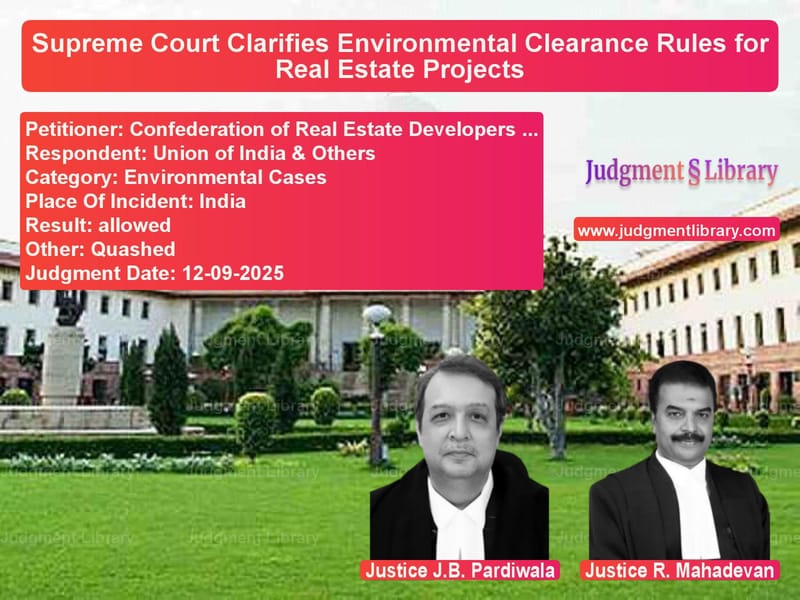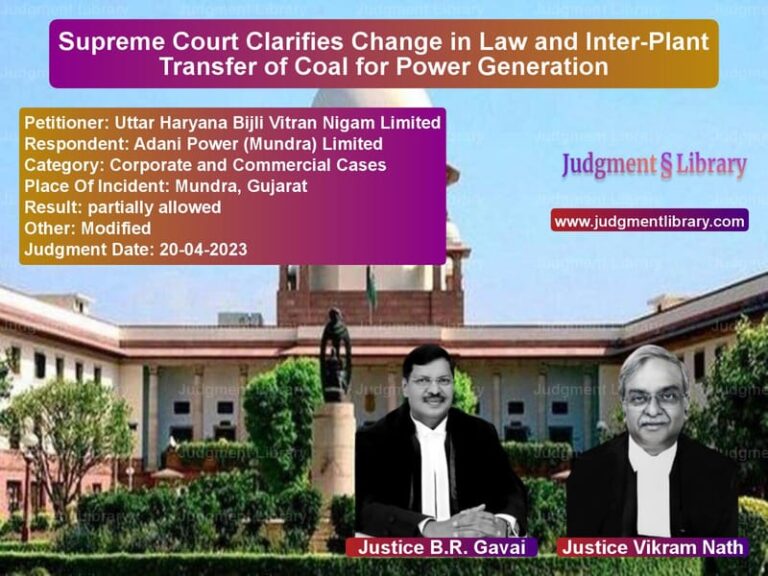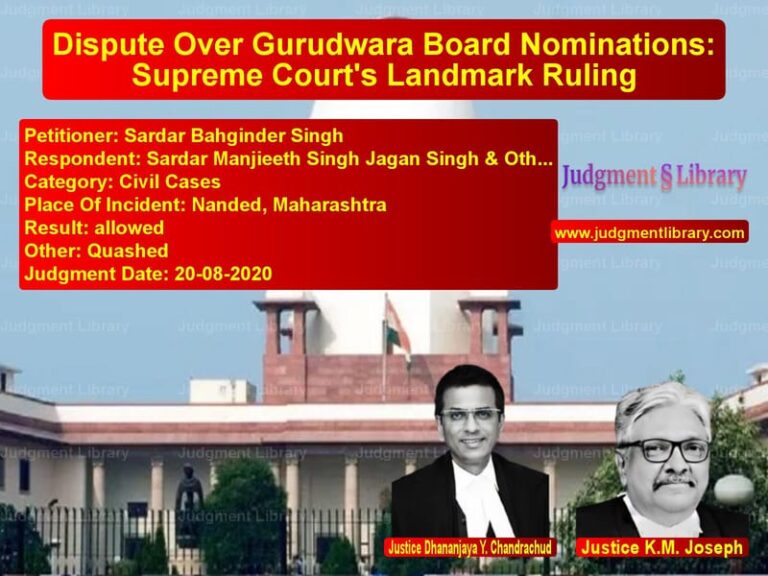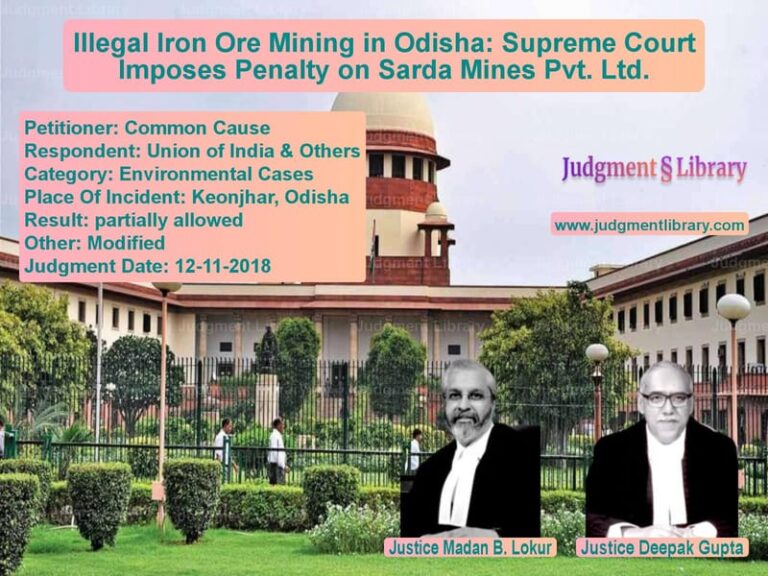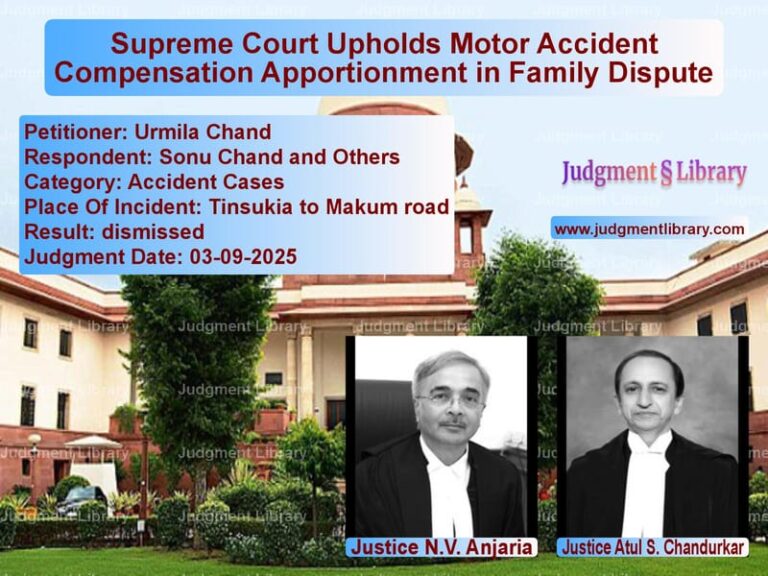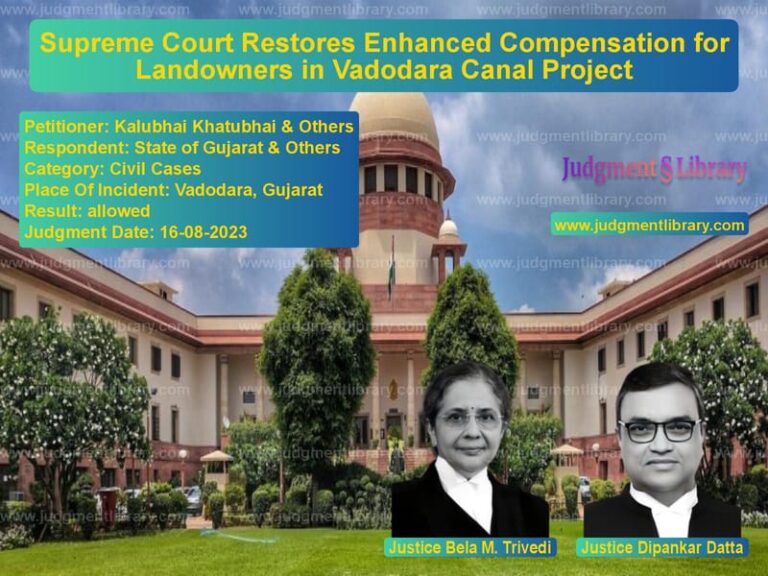Supreme Court Clarifies Environmental Clearance Rules for Real Estate Projects
In a landmark judgment that brings much-needed clarity to India’s real estate sector, the Supreme Court has resolved a long-standing controversy regarding environmental clearance requirements for building and construction projects. The case involved appeals by the Confederation of Real Estate Developers’ Associations of India (CREDAI), Godrej Properties Ltd., and Sai Sahara Developers Ltd. against an order of the National Green Tribunal (NGT) that had created uncertainty and delays in thousands of real estate projects across the country.
The Core Legal Question
The central issue before the Supreme Court was whether ‘General Conditions’ under the Environmental Impact Assessment (EIA) Notification of 2006 apply to building and construction projects [Item 8(a)] and township and area development projects [Item 8(b)]. These General Conditions require that projects located within 5 km of protected areas, critically polluted areas, eco-sensitive zones, or inter-state boundaries be treated as Category A projects, requiring clearance from the Central Expert Appraisal Committee rather than State-level authorities.
The appellants argued that the General Conditions were never intended to apply to their projects, while environmental activists contended that stricter central oversight was necessary to protect ecologically sensitive areas from the impacts of large-scale construction.
The Developers’ Arguments
The real estate developers presented a compelling case based on the explicit language of the EIA 2006 Notification. CREDAI’s senior counsel argued that “the ‘General Conditions’ (GC) under the EIA 2006 Notification are inapplicable to Items 8(a) and 8(b).” He pointed to the structure of the notification itself, noting that “Column 5 against these items contains no stipulation that the General Conditions shall apply. By contrast, wherever the legislature intended the General Conditions to apply, it has expressly so provided.”
The developers relied heavily on the Supreme Court’s earlier decision in In Re: Construction of Park at Noida Near Okhla Bird Sanctuary, where the Court had observed that “the question of application of general condition to the projects/activities listed in the schedule also needs to be put beyond any debate or dispute.” This, they argued, showed that the exclusion of building projects from General Conditions was a conscious policy decision to promote decentralization.
Godrej Properties highlighted the practical consequences of the NGT’s order, stating that “pursuant to the directions issued by the NGT, there is presently no authority competent to appraise applications for Environmental Clearance in respect of projects falling under Items 8(a) and 8(b) of the Schedule.” They emphasized that this paralysis was affecting thousands of homebuyers, with “more than 1,469 flat purchasers are affected, whose homes are at stake.”
The Government’s Position
The Union of India, represented by the Additional Solicitor General, supported the developers’ position. The government clarified that “since no such reference was made in respect of items 8(a) and 8(b), the General Conditions were never applicable to them.” This position had been consistently maintained through various Office Memoranda, including one dated May 24, 2011, which specifically stated that building projects do not attract General Conditions even in critically polluted areas.
The government also emphasized the competence of State-level authorities, noting that “SEACs comprise experts of comparable standing to members of Central EACs” and that “directing that such projects be appraised only by MoEF&CC would create inequality, encourage forum-shopping, and overburden MoEF&CC.”
The Environmental Perspective
Respondent No. 3, representing environmental concerns, argued for stricter scrutiny of construction projects. They contended that “Building and Construction Projects – among the most pollution-intensive industries in the country – are subjected to higher scrutiny by sector-specific Expert Appraisal committees (EACs) at the Central Level.” They emphasized that projects near environmentally sensitive areas “demand rigorous appraisal by experts with relevant domain expertise.”
The environmental respondents also argued that “the EIA 2014 Notification inserting Note 2 to Entry 8 (excluding GC) itself shows that GC otherwise applied to Building and Construction projects.” They maintained that administrative circulars could not override statutory mechanisms for environmental protection.
The Supreme Court’s Analysis
The Supreme Court, in its detailed analysis, focused on the plain language of the EIA 2006 Notification. The Court observed that “It is a settled principle of law that while interpreting any legislation including a subordinate legislation, the first principle that has to be adopted is the literal rule of interpretation. Applying literal interpretation to the 2006 notification, it would be clear that said notification does not provide for applicability of the General Conditions to projects in Entry 8(a) and 8(b) of the Schedule.”
The Court made a crucial observation about the structure of the notification: “As already observed hereinabove, wherever the delegated legislation wanted the General Conditions to be made applicable it has been specifically provided in column 5 of the projects/activities.” Since Items 8(a) and 8(b) had no such mention, the General Conditions did not apply to them.
The Court also addressed the practical implications, noting that “it is not possible for the MOEF&CC to consider the projects from all the states of the country.” More importantly, the Court expressed confidence in State-level authorities, stating “we are of the considered opinion that the SEIAA is a body of experts constituted/appointed by the Central Government itself and it is better equipped to undertake study qua environmental impact of proposed projects in the respective state/union territory.”
Balancing Development and Environment
The judgment reflects the Court’s careful balancing of environmental protection with developmental needs. The Court acknowledged that “the courts have consistently insisted upon protecting environment and consistently held that the natural resources are held in trust by the present generation for the future generations. However, at the same time, the courts have also consistently taken into consideration the need for developmental activities.”
The Court endorsed the principle of sustainable development, noting that “A country cannot progress unless the development takes place. As such, this Court in a catena of decisions has adopted the principle of sustainable development.” This balanced approach recognizes that environmental protection and development are not mutually exclusive but must be pursued together.
Impact and Implications
The Supreme Court’s decision provides much-needed certainty to India’s real estate sector, which had been grappling with uncertainty and delays due to the NGT’s order. By upholding the 2025 Notification (while striking down one exemption), the Court has ensured that building and construction projects will continue to be appraised at the State level, while maintaining appropriate environmental safeguards.
The judgment reaffirms the competence of State-level environmental authorities and recognizes the practical challenges of centralizing clearance for thousands of construction projects across the country. At the same time, it maintains the importance of environmental protection through the existing framework of State-level appraisal by expert bodies.
This decision is particularly significant given the massive housing shortage in India and the government’s focus on ‘Housing for All.’ By providing clarity on environmental clearance procedures, the Court has removed a major regulatory hurdle while ensuring that environmental considerations remain integral to the development process.
Petitioner Name: Confederation of Real Estate Developers Association of India (CREDAI), Godrej Properties Ltd., Sai Sahara Developers Ltd..Respondent Name: Union of India & Others.Judgment By: Justice J.B. Pardiwala, Justice R. Mahadevan.Place Of Incident: India.Judgment Date: 12-09-2025.Result: allowed.
Don’t miss out on the full details! Download the complete judgment in PDF format below and gain valuable insights instantly!
Download Judgment: confederation-of-rea-vs-union-of-india-&-oth-supreme-court-of-india-judgment-dated-12-09-2025.pdf
Directly Download Judgment: Directly download this Judgment
See all petitions in Environmental Cases
See all petitions in Judgment by J.B. Pardiwala
See all petitions in Judgment by R. Mahadevan
See all petitions in allowed
See all petitions in Quashed
See all petitions in supreme court of India judgments September 2025
See all petitions in 2025 judgments
See all posts in Environmental Cases Category
See all allowed petitions in Environmental Cases Category
See all Dismissed petitions in Environmental Cases Category
See all partially allowed petitions in Environmental Cases Category

